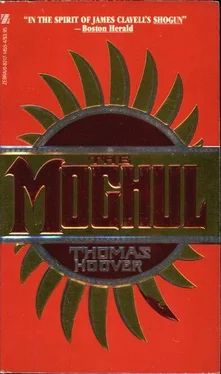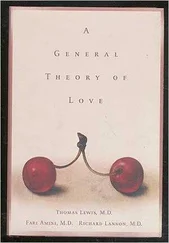Thomas Hoover - The Moghul
Здесь есть возможность читать онлайн «Thomas Hoover - The Moghul» весь текст электронной книги совершенно бесплатно (целиком полную версию без сокращений). В некоторых случаях можно слушать аудио, скачать через торрент в формате fb2 и присутствует краткое содержание. Жанр: Исторические приключения, на английском языке. Описание произведения, (предисловие) а так же отзывы посетителей доступны на портале библиотеки ЛибКат.
- Название:The Moghul
- Автор:
- Жанр:
- Год:неизвестен
- ISBN:нет данных
- Рейтинг книги:3 / 5. Голосов: 1
-
Избранное:Добавить в избранное
- Отзывы:
-
Ваша оценка:
- 60
- 1
- 2
- 3
- 4
- 5
The Moghul: краткое содержание, описание и аннотация
Предлагаем к чтению аннотацию, описание, краткое содержание или предисловие (зависит от того, что написал сам автор книги «The Moghul»). Если вы не нашли необходимую информацию о книге — напишите в комментариях, мы постараемся отыскать её.
The Moghul — читать онлайн бесплатно полную книгу (весь текст) целиком
Ниже представлен текст книги, разбитый по страницам. Система сохранения места последней прочитанной страницы, позволяет с удобством читать онлайн бесплатно книгу «The Moghul», без необходимости каждый раз заново искать на чём Вы остановились. Поставьте закладку, и сможете в любой момент перейти на страницу, на которой закончили чтение.
Интервал:
Закладка:
AFTERWORD
For those curious how much of the foregoing tale is "true," perhaps it may be helpful to unmask the original inspiration for several of the characters. The Great Moghul Akman, his son Arangbar, and Arangbar's primary consort, Queen Janahara, had real-life counterparts in the Great Moghul Akbar, his successor Jahangir, and Jahangir's resourceful Persian queen, Nur Jahan. Nadir Sharif, for all his duplicity, had nothing on Jahangir's devious prime minister, Asaf Khan, the brother of Queen Nur Jahan. Similarly, Prince Jadar was no more ingenious, and no less wronged, than Asaf Khan's son-in-law, the subsequent Moghul and builder of the Taj Mahal, Shah Jahan. Prince Jadar's strategies and intrigues, first with and then against Queen Janahara, resemble in many ways those of Shah Jahan as he struggled to thwart the ambitions of Nur Jahan. The Shahbandar and the opium-sotted governor of Surat also had counterparts in real individuals, as did Jadar's beloved Mumtaz, his younger brother Prince Allaudin, Princess Layla, Malik Ambar, and Inayat Latif. The Sufi mystic Samad was re-created from the real-life poet Sarmad, who was admired by Shah Jahan and who was executed by a later Moghul for precisely the reasons given in the story. Of the Portuguese, Father Alvarez Sarmento was drawn in some part from the learned Father Jerome Xavier. It should be noted that the unofficial actions of the early Jesuits in India are remembered today primarily through the perceptions of English travelers, all of whom were all staunchly anti-Catholic. The role of Portuguese Jesuits in the preceding story was faithful in spirit to the English reports, although today these may seem mildly paranoid in their fear and suspicion. Of the English characters, only Huyghen and Roger Symmes are beholden to single, recognizable individuals: being Jan van Linschoten and Ralph Fitch, respectively. Brian Hawksworth is largely a fictional composite, whose experiences recall in part those of William Hawkins (in India from 1608 to 1613) and in part those of other seventeenth-century European adventurers. His defeat of the four Portuguese galleons was only a slight dramatization of historic victories by severely outnumbered English frigates off Surat in 1612 and 1614 commanded by English captains Thomas Best and Nicholas Downton, both sailing for the early East India Company. Hawksworth's mercurial relationship with the Moghul and his experiences at the Moghul's court were re-created in part from the letters and diaries of William Hawkins and those of his successor, Sir Thomas Roe. As did Brian Hawksworth, William Hawkins adopted the Indian style of life in dress and diet, much to the astonishment of his European contemporaries. Brian Hawksworth's love affair with Shirin was suggested by William Hawkins' marriage to an Indian women of noble descent, possibly a member of the Moghul's court, on the encouragement of Jahangir, who suspected the Jesuits of attempting to poison him and wanted his food monitored. Hawkins' wife later journeyed to London, where she caused the East India Company considerable disruption over their responsibilities toward her, and eventually she returned to India.
Although most of the early Englishmen in India resembled our George Elkington far more than they did Brian Hawksworth, there was one early traveler, Thomas Coryat, whose cultural and human sensibilities would not have clashed greatly with those of Brian Hawksworth at the end of his story.
The sudden appearance of the bubonic plague in India was taken from the court history of the Moghul Jahangir. Similarly, the capture of the Moghul's trading vessel by the Portuguese, intended to intimidate him and forestall an English trade agreement, and his retaliatory closure of Jesuit missions happened essentially as described. The Jesuits were allowed to reopen their missions a few years later, but the damage was done. There seems evidence that the Portuguese did conspire to assist the forces opposing the succession of Shah Jahan, whom they justifiably feared. The rebellion of Shah Jahan extended over several years, and did include at one point a stay on the Udaipur island of Jagmandir, where some historians now believe he first saw inlay work of the type that later became a distinguishing feature of his crowning creation, the Taj Mahal.
For those who may wish to gain more familiarity with Moghul India, various sources can be recommended. Lively historical works on the Moghul period include Waldemar Hansen's classic panorama The Peacock Throne and the even more recent Cities of Mughul India by Gavin Hambly, to mention two of my favorites. For those still more curious, and adventurous, there are the original writings from the seventeenth century, which will require more digging but are decidedly worth the effort. Readers with access to a major library may be able to find reprinted editions of the diaries of several seventeenth-century English and European travelers in India. These are the works, with their trenchant firsthand accounts, that all students of the era find indispensable. Perhaps the most easily obtainable is a collection entitled Early Travels in India, William Foster, ed., which contains edited versions of the diaries of William Hawkins and several others. Following this, the most thorough account of England's early diplomacy in India is contained in the diary entitled The Embassy of Sir Thomas Roe (1615-1619), written by England's first real ambassador to India. Many subsequent diaries and letters of seventeenth-century European travelers have been reprinted by the Hakluyt Society, whose publications comprise a virtual bibliography of the era.
The most relevant Indian writings, also obtainable in English translation from a fine library, are the memoirs of the Great Moghul Jahangir, entitled the Tuzuk-i-Jahangiri, and an encyclopedic description of court life in late sixteenth-century India entitled the Ain-i-Akbari, set down by Akbar's chief adviser and close friend, Abul Fazl.
In fashioning a story such as this, a writer must necessarily be indebted far beyond his ability to acknowledge adequately. The scholar who provided the greatest assistance was Professor John Richards of the Duke University Department of History, a widely respected authority on Moghul (he might prefer it be spelled Mughal) India, who graciously consented to review the manuscript in draft and offered many corrections of fact and interpretation. He is, of course, in no way accountable for any liberties that may have remained. Thanks are similarly due Professor Gerald Berreman of the University of California at Berkeley, a knowledgeable authority on Indian caste practices, who agreed to review the relevant portions of the manuscript. I am also indebted to Waldemar Hansen, who generously provided me with the voluminous notes accumulated for his own history, The Peacock Throne. Historians in India who gave warmly of their time and advice include Dr. Romila Thapar, Professor P. M. Joshi, and Father John Correia-Alfonso, the preeminent Jesuit authority on the early Moghul era and a scholar whose characteristic integrity and generosity roundly revise the period depiction of his order in the story.
Thanks also are due Mrs. Devila Mitra, Director-General of the Archaeological Survey of India, for special permission to study the now-restricted zenana quarters beneath the Red Fort in Agra; to Nawab Mir Sultan Alam Khan of Surat, for assistance in locating obscure historical sites in that city; to Indrani Rehman, the grande dame of Indian classical dance, for information on the now-abolished devadasi caste; to Ustad Vilayat Khan, one of Indian's great sitar masters, for discussions concerning his art; and to my many Indian friends in New York, New Delhi, and Bombay.
I am also obliged to Miss Betty Tyres of the Indian Department of the Victoria and Albert Museum in London, who kindly provided access to the museum's extensive archives of Indian miniature paintings, and to the National Maritime Museum in Greenwich for information on early English sailing vessels.
Читать дальшеИнтервал:
Закладка:
Похожие книги на «The Moghul»
Представляем Вашему вниманию похожие книги на «The Moghul» списком для выбора. Мы отобрали схожую по названию и смыслу литературу в надежде предоставить читателям больше вариантов отыскать новые, интересные, ещё непрочитанные произведения.
Обсуждение, отзывы о книге «The Moghul» и просто собственные мнения читателей. Оставьте ваши комментарии, напишите, что Вы думаете о произведении, его смысле или главных героях. Укажите что конкретно понравилось, а что нет, и почему Вы так считаете.












